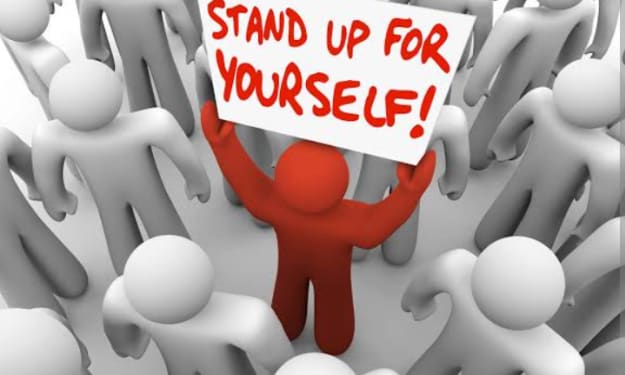The Importance of Prioritizing Mental Health in Today's World
The Impact of Mental Health on Overall Well-being

I attended the wedding of my best friend in January of last year. During the event, I had the opportunity to meet many of her friends. As we were all participating in dance routines together, we grew quite close. Since it was a Christian wedding, there were numerous delicious non-vegetarian food options available. However, one of her friends claimed to be a vegetarian, which made me feel sorry for him because there were very few vegetarian choices. Later, as the caterers were packing up, I noticed him alone in a corner, eating chicken wings. I was shocked and felt betrayed by his actions. Fast forward to Christmas last year, when I met with my best friend and her partner. I decided to bring up the incident and criticised him for lying to us. To my surprise, she informed me that he had been struggling a lot lately due to various issues with his eating habits. He actually had an eating disorder. As friends, we were all doing our best to support him. Suddenly, I was overwhelmed with a sense of guilt. A mental health professional assessed an individual out of curiosity, asking a series of questions. Many of us have likely judged others without fully understanding their struggles. We may label someone as lazy when they consistently procrastinate or make excuses, or dismiss others as being too emotional or sensitive. Likewise, we often feel frustrated when we're hungry and waiting for someone to make a decision at a restaurant. However, these judgments fail to take into account the complex and often unseen experiences that shape a person's behaviour. Everyone we encounter is the result of a lifetime of experiences, including potential traumas that have influenced their thoughts and actions. While this doesn't excuse harmful behaviour, it highlights the importance of providing them with help and support. Trauma is not merely an external event; it also affects us internally. It can lead to isolation, but the path to recovery involves connecting with others and building meaningful relationships. By opening up to trusted individuals such as family and friends, we can feel supported and foster a sense of connection with one another.
The healing of trauma cannot be achieved in isolation. It requires comfort, support, and connection with others. Now, let me explain how trauma impacts our autonomic nervous system (ANS) using the polyvagal theory, also known as the science of connection. According to Deb Dana, an author and clinician, the polyvagal theory is based on three organising principles: hierarchy, neuroception, and co-regulation. Hierarchy refers to the three states that our nervous system goes through multiple times each day. The first state is connection, also known as the rest and digest space, where we feel social and safe. The second state is mobilisation, which is the fight or flight response, associated with the sympathetic system. The third state is disconnection, which can be described as collapse, shutdown, or freeze, and is related to the dorsal system. It's important to remember these words: connection, social and safe, ventral, mobilisation, fight or flight, disconnection, shutdown, and freeze. These terms will be used throughout the discussion. These three states can be envisioned as a ladder that we can move up or down by activating or relaxing our nervous system in response to various stimuli. However, it's crucial to note that this hierarchy must be traversed sequentially, even when we are in a state of disconnection. We must pass through mobilisation to reach the stage of connection.
Even if it is brief, we must go through it systematically. The concept of new reception refers to our ability to receive signals, either from within our own body or from the external environment, that dictate whether we should enter a state of connection or protection. Our nervous system is constantly attuned to these cues, receiving this information every microsecond. It is important to note that this process occurs independently of our conscious thinking. Before any information reaches our brain, it must first pass through our nervous system. Co-regulation, or the idea that we are wired to connect with others, confirms that our nervous system craves connection with other nervous systems. This need for connection is a fundamental aspect of our biology and is crucial for our survival.
The human nervous system naturally assesses new experiences with a binary question: is this a threat to life or is this safe? At this initial stage, the brain is not yet engaged, and our senses (sight, smell, hearing, touch, and intuition) play a crucial role in making a rapid decision. This process can be visualised as a triangular block, with the brain at the top point and the nervous system forming the wall below. Each interaction is first evaluated as either a threat or safe, and if deemed safe, a connection to the brain is established. Otherwise, mobilisation or disconnection occurs. Our bodies possess an incredible ability to make split-second decisions, often influenced by past negative experiences. If we have previously encountered a difficult situation, our nervous system immediately activates mobilisation or disconnection as a protective measure, aiming to avoid a repeat scenario. To illustrate this further, allow me to share a common conflict that frequently arises between my partner and me. Consider Suhana, who highly values her independence and often becomes deeply immersed in her work.
Abu inquires if Suhana desires assistance, which can potentially trigger traumatic memories. Suhana may have encountered criticism in the past when faced with the same question, leading to a belief that she is incapable of doing anything right. Consequently, Suhana defensively requests Abu to leave her alone. Unfortunately, this dismissal can make Abu feel rejected, as he expresses affection through acts of service. This exchange can cause both Suhana and Abu to become emotionally dysregulated, leading to a heated argument. For individuals who have experienced severe trauma, fight or flight responses may not be feasible. This is especially true for children who have suffered abuse at the hands of their caregivers. In such cases, the child is unable to defend themselves or escape, leaving them feeling helpless. They may enter a freeze response or experience disconnection and shutdown. This state of shutdown can even result in fainting. During this time, individuals often isolate themselves, experiencing separation anxiety and feeling alone in their pain. They are unable to seek solace from their caregiver, as they believe their feelings are misunderstood. In moments of mobilisation and disconnection, individuals require social connection to regulate their nervous system and enter a state of connection known as the ventral state. This state is crucial for healing and finding solace.
Thrive by embracing their true selves, it is paradoxical that during times of utmost need for connection, we inadvertently gravitate towards isolation. How can we then achieve co-regulation and cultivate a nourishing environment for our nervous system? What steps must be taken to remain in, or transition to, our ventral state where we can experience trust, connection, and attachment? Consider the scenario of Suhana and Abu. They must learn to co-regulate, establish a connection with each other, and recognize that they do not pose threats to one another. Abu could adopt a different approach when communicating with Suhana, perhaps by asking if there's any way he can provide warmth and support to her. On the other hand, Suhana could benefit from pausing, observing the situation, and genuinely questioning if it truly poses a threat to her well-being, all while taking a deep breath. Resources by identifying early signs of mental illness and by making sure that access to proper care is given to individuals by utilising the community health workers such as the Asha work model worker model to be trained to provide basic mental health care to people and identify individuals who need immediate help by strengthening the community-based services by creating support groups and providing training to family members and to supporters and to community leaders by providing Mental Health Services in non-traditional settings like schools workplaces universities community centres this helps in reducing stigma and increases accessibility so let's together shift from a place of moral High Ground traditionalized medical approach towards creating a compassionate connected Community for all that's my vision for the future of Mental Health.
About the Creator
Milton uchoi
I'm aspirant to aspire others before I expires. To be voice for the voiceless.
Enjoyed the story? Support the Creator.
Subscribe for free to receive all their stories in your feed. You could also pledge your support or give them a one-off tip, letting them know you appreciate their work.






Comments
There are no comments for this story
Be the first to respond and start the conversation.